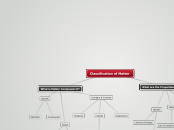MAT.105X
9.2
Solving Absolute Value Inequalities
Solve Special Cases of Absolute Value Inequalities
>= 0
Given the inequality |P| >= 0 where P is an expression, any real number is a solution. That is, the solution set consists of all real numbers.
Note that |P| > 0 will have one value that does not work as a solution, namely the value that makes P = 0. All other real numbers will work.
> or >= and k < 0
Given the inequality |P| >= 0 where P is an expression and k is any negative real number, the solution set consists of all real numbers. (>= can be replaced with >.)
<= 0
Given the inequality |P| <= 0 where P is an expression, the solution will consist only of the solution to P = 0.
Note that |P| < 0 has no solution.
< or <= and k < 0
Given the inequality |P| <= k where P is an expression and k is any negative real number, there is no solution. (<= can be replaced with <.)
Solve an Applied Problem Using an Absolute Value Inequality
Error
Measurements usually have a certain amount of uncertainty, or possible error. If a given measurement is supposed to be m but can be k less than m or k greater than m, we often say the measurement is m +- k.
If x is the actual measurement of a specific instance, then we can write
m - k <= x <= m + k.
Which can be written as the absolute value inequality
|x - m| <= k.
Solve Absolute Value Inequalities Involving > or >=
Let P be an expression and let k be a positive real number. To solve |P| >= k, solve the compound inequality P >= k or P <= -k. (> may be substituted for >=.)
Solve Absolute Value Inequalities Containing < or <=
Solving
Let P be an expression and let k be a positive real number. To solve |P| <= k, solve the three-part inequality -k <= P <= k. (< may be substituted for <=.)
Definition
An absolute inequality is a mathematical statement that includs an inequality (<, <=, >, or >=) and the absolute value of an expression involving a variable.









